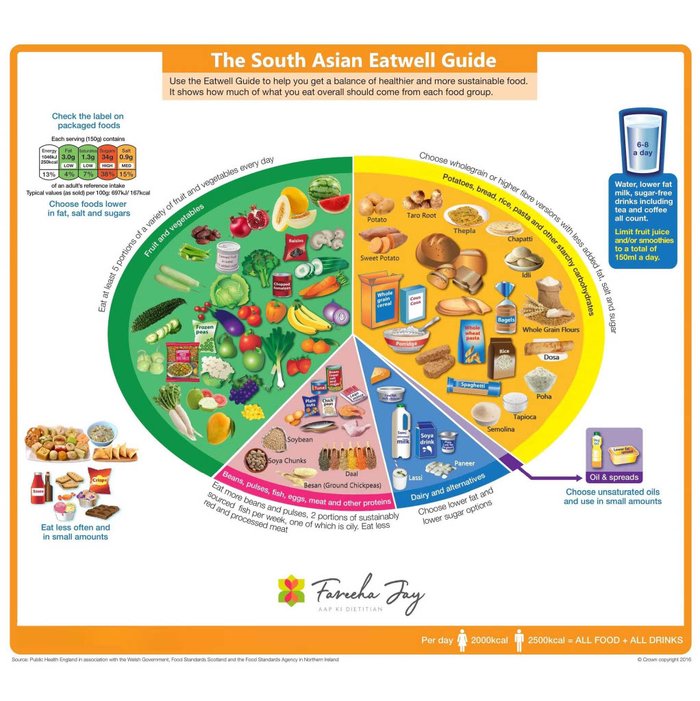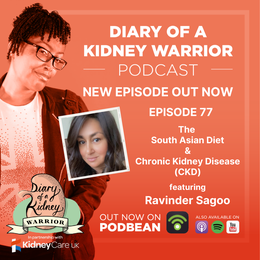India, Bangladesh, Pakistan, Sri Lanka, Nepal, Afghanistan, Bhutan and Maldives make up the South Asian continent. Geographically, however, this vast continent is dominated by the Indian subcontinent. The term ‘Asian’ in the UK tends to refer to people, or influences, from mainly India, Pakistan and Bangladesh. Every state in India has its own unique culinary practices and traditional foods.
This means that if you are from South Asian origin and have been diagnosed with chronic kidney disease (CKD), it is very important to discuss your typical daily diet in detail with your kidney dietitian. By taking time to do this early on in your kidney journey, an eating plan that acknowledges and understands the foods culturally relevant and important to you – and which will also support your kidney health – can be developed. Your kidney dietitian will work with you to do this.
Is it possible to enjoy South Asian cuisine and support good kidney health?
Medical research tells us that people of South Asian origin (and people of African and Caribbean heritage) are at higher risk of developing diabetes, high blood pressure, high cholesterol and problems with blood circulation to the heart (cardiovascular disease). Diabetes or high blood pressure conditions that aren’t managed effectively can lead to CKD if left untreated.
It is therefore extremely important that if you are of South Asian origin, you receive culturally appropriate diet and lifestyle advice from your kidney dietitian. This advice is not geared to stop you enjoying the food you love, but to show you how to enjoy it safely, and in ways that will keep you well.
All recipes and dietary advice found in the Kidney Kitchen is about foods you and your family CAN enjoy.
Read our Kidney Kitchen South Asian Recipes magazine online.
As with other cuisines, it is possible to eat a balanced and healthy South Asian diet. South Asian dishes include a wonderful variety of fruits, vegetables, lentils, legumes, wholegrains and pulses, all of which support good overall health. It also includes a range of seafood and meats. So, it is safe to say that this vast range of food sources provides plenty of goodness in the form of vitamins, minerals, fibre and protein.

Since the South Asian diet is predominantly plant-based, it is also naturally high in fibre. We know that diets rich in fibre are beneficial in the treatment of diabetes and support good cholesterol control and gut health. In addition, most South Asian recipes are cooked using fresh ingredients and spices which also have added health benefits.
However, the not-so-great news is that many South Asian meals can be high in sugar, salt and saturated fats (the less healthy fat). This means it is easy to consume too many ‘hidden’ calories, which can cancel out the good work the healthy ingredients do. So, there is a balance to be struck – ensuring you enjoy your favourite foods in moderation, but also ensuring that you include plenty of healthy ingredients.
Sweets and desserts
Most South Asian sweets and desserts are high in a mineral called potassium. Having CKD may mean you need to eat less of this mineral. The potassium comes from the milk, condensed milk, milk powder, evaporated milk, or coconut milk/cream they contain.
As if this wasn’t enough unwelcome news, most South Asian sweets also contain dried fruits and nuts, which are also high in potassium. But all is not lost!
If you have CKD, and a sweet tooth, and have been advised by your kidney dietitian to limit your potassium intake, you can still have these treats, but try to enjoy them only on special occasions, and in smaller quantities.
Dairy products can be high in potassium and a mineral called phosphate. It is advisable to limit your dairy (from milk and milk products such as yoghurt) to ½ a pint (300ml) a day. This includes any milky puddings.
South Asian sweets to enjoy in moderation
- Julab jamun
- Jelabi Seera/Siro
- Kheer made with rice/ vermicelli
- Rasmalai
- Semiyan
- Payasam




